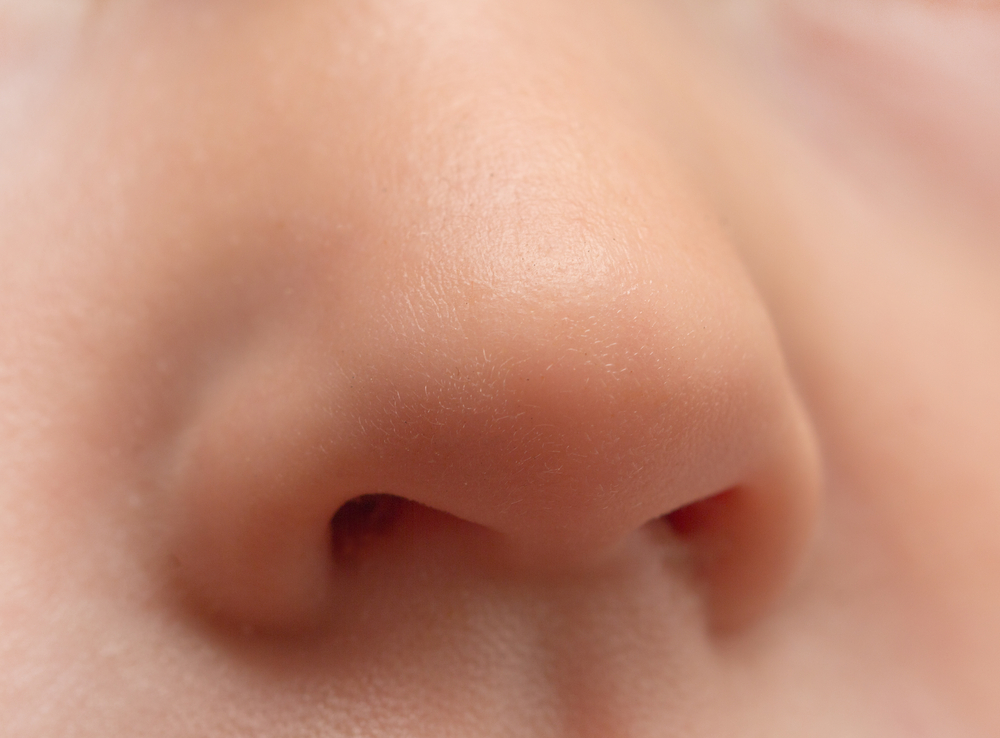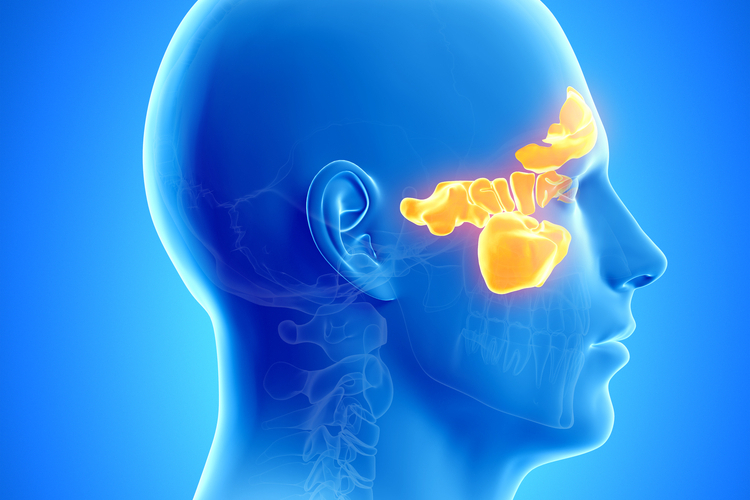Nose: Facts, Function & Diseases

The human nose is more than just a flap of flesh and cartilage on the front of the face. Besides being part of the respiratory system that inhales oxygen and exhales carbon dioxide, the nose also contributes to other important functions, such as hearing and tasting.
Size and shape
Human noses can have a wide array of shapes and sizes due to genetics and injuries. Men generally have larger noses than women, researchers say. According to the Guinness Book of World Records, the largest human nose on a living person belongs to Mehmet Ozyurek of Turkey. His nose is 3.46 inches (8.8 centimeters) long from the bridge to the tip.
Function
The two openings in the nose care called nostrils, or napes. They lead to two nasal cavities that are separated by the septum, a wall of cartilage. Inside the face is an intricate system of canals and pockets of air called sinus cavities. Sinus cavities span all the way to the back of the skull, right above the oral cavity, within the cheekbones and between the eyes and brows. All of these areas are responsible, at least in part, for breathing, smelling, tasting and immune system defense.
The human nose can smell over 1 trillion scents, according to researchers. The nose smells with the olfactory cleft, which is the roof of the nasal cavity. It is right next to the “smelling” part of the brain, which consists of the olfactory bulb and fossa. This part of the nose has many nerve endings that carry smell sensations to the brain, according to the American Rhinologic Society.
The nasal passageways on either side of the nose open into the choana and then into a chamber called the nasopharynx, which is the upper part of the throat. This chamber opens into the oropharynx, the throat area behind the mouth. When air is inhaled through the nostrils, it travels through the nasal passages, the choana, the nasopharynx, the oropharynx and the voice box and ends up in the lungs. Basically, in the respiratory system, the nose is a passageway for air.

Snot and boogers
The nose is also the first line of defense against sickness. The nose is lined with fine, hair-like projections known as cilia. The sinuses are lined with mucus-making cells. The mucus (or "snot") keeps the nose from drying out. Together, cilia and snot collect dust, bacteria and other debris before they can enter the rest of the body, according to Encyclopedia Britannica. [Infographic: What Your Snot Says About You]
Typically, nasal mucus — made of water, proteins, antibodies and salts — is clear. But during an infection, snot can change to yellow or green, indicating the body is fighting off a bacterial or viral infection. The green color comes from a chemical secreted by white blood cells — specifically, the heme group in the iron-containing enzyme myeloperoxidase — to kill pathogens.
Clumps of dried mucus, dirt and debris are called "boogers," and despite the taboo, one Canadian scientist thinks "picking your nose" — and eating your boogers — may be good for you.
Scott Napper, a biochemistry professor at the University of Saskatchewan, hypothesizes that snot tastes sweet for good reason (take his word for it or try it yourself). That may be a signal to the body to eat it and get immune-boosting benefits.
"By consuming those pathogens caught within the mucus, could that be a way to teach your immune system about what it's surrounded with?" Napper told the Canadian Broadcasting Corporation.
His hypothesis fits on with other theories about the link between improved hygiene and an increase in allergies and autoimmune disorders, he said. "From an evolutionary perspective, we evolved under very dirty conditions and maybe this desire to keep our environment and our behaviors sterile isn't actually working to our advantage."
Other senses
Without the nose, the body wouldn’t be able to taste food nearly as well. What humans call “taste” is actually a mixture of different sensations. One of the sensations is smell. When food is eaten, the nose smells the food and sends information to the mouth in a process called olfactory referral. This is why those with a cold or other nose condition finds that food lacks flavor.
The nose also plays a role in hearing. The nasopharynx is flanked on either side by eustachian tubes. These tubes connect the nasopharynx to the middle ear. The nasopharynx fills the middle ear with air, equalizing air pressure in the ear with the atmosphere around it, which is an important part of hearing properly, according to the American Rhinologic Society.
Diseases & conditions
Since the nose is complex, there are many things that can go wrong. “The most common ailments people come to our office with are difficulty breathing through the nose, nasal obstruction, nasal allergies, chronic sinus infections, and nasal polyps. Another thing we’re seeing more of is people coming in for a poor sense of smell,” said Dr. Seth J. Kanowitz, attending physician at the Department of Otolaryngology at the Morristown Medical Center in Morristown, New Jersey, and co-director of the hospital’s skull-based surgery program.
The most common cause for the loss of the sense of smell is a viral infection, like a cold, Kanowitz told Live Science. Sinus infections, nasal polyps, tobacco use, head trauma and, in exceedingly rare instances, tumors, may also cause smell loss. Some loss of smell also occurs during the natural aging process, much akin to visual and hearing loss.
Sinusitis is another common nose condition. “Sinusitis is a condition meaning inflammation of the sinuses,” Dr. Rob Straisfield, medical contributor for MJ Wellness, told Live Science. The inflammation can come from allergies, viruses and certain diseases. Some symptoms are weakness, fever, fatigue, cough and congestion, according to the U.S. National Library of Medicine (NLM).
The nasal septum, the flat plate of cartilage in the center nose, can be damaged and pushed to the left or right, or the nose can grow crookedly. This condition is called a deviated nasal septum. A deviated septum can cause breathing problems and discomfort because one or both of the nasal chambers are smaller than they are supposed to be. Sometimes a deviated septum is corrected with surgery.
Many people have problems with clogged sinuses or a stuffy nose. This can be caused by swollen tissue or the blockage of mucus. Often, these problems can be dealt with at home. “Nasal saline irrigations with high volume, low pressure bottles have been shown to be very effective to keep the nasal passageways clear, remove allergens and thick mucus, and alleviate sinus infections — potentially removing the need for antibiotics,” Kanowitz said.
Things coming out of the nose can be a problem. A runny nose is caused by the production of mucus in the nose. The production of mucus can be triggered by anything that irritates or inflames the nose, such as allergies, a cold, the flu or dust, according to the Mayo Clinic. Bloody noses are caused when the tiny blood vessels in the nose break due to dry air, irritants, chemicals, impacts to the nose and various other factors.
Additional Resources
Sign up for the Live Science daily newsletter now
Get the world’s most fascinating discoveries delivered straight to your inbox.











